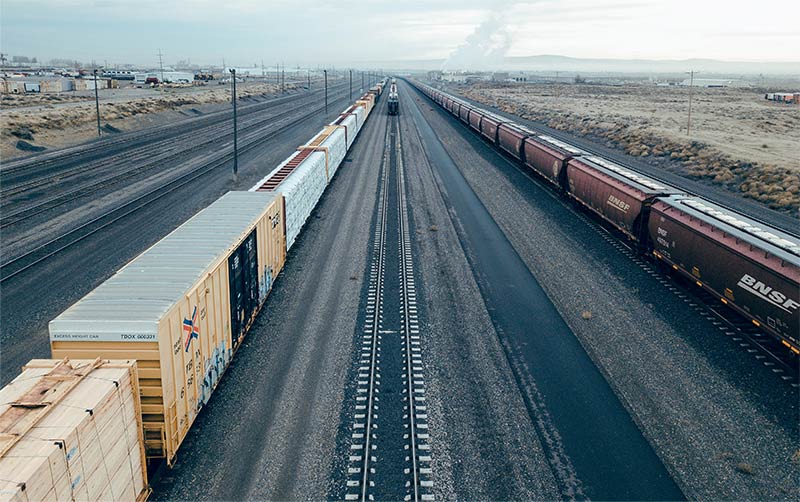
Supply Chain Missing Links
Fine-tuning their supply chain could achieve up to 35 per cent reduction in total costs and give Australian manufacturers millions of dollars in financial benefits, according to Rob O’Byrne, managing director of Logistics Bureau in Australia.
He describes it as the next big breakthrough, particularly for manufacturers who believe their operations are already as productive as possible.
It is, he says, the next step for companies which have successfully accepted successive cost-saving wisdoms – they’ve modernised their production line when that was the thing to do, revitalised their marketing, outsourced everything in sight, and are now asking themselves: “Where do we go now?”
He says the supply chain can produce greater benefits than all these tactics because finding out how to remove or realign a single link in one’s supply chain produces savings in three areas – inventory, transport, and storage.
“Just by improving a single link in the chain so that the final seller is never overstocked nor out of stock dramatically increases profits,” he says.


About 60 – 70 per cent of manufacturers outsource some of their warehousing and distribution to third-party logistics providers (3PLs) ranging from giants such as TNT, Mayne, and Toll to local delivery firms.
We have figures showing the warehousing sector alone produces in excess of $1.5 billion-a-year so the national total spent by industry on that could be as high as $2.5 billion.
But to achieve a significant supply chain improvement means a manufacturer or retailer needs to:
- Increase their levels of information sharing.
- Place a huge degree of trust in those upstream and downstream from themselves
- Agree to longer-term relationships with their suppliers and customers
- Have the technology to exchange this information
- Establish leak-proof security of information.
INFORMATION-SHARING means a retailer telling his distributer what his year’s promotional programme will be so that he has stock to satisfy promotional demand. The distributer in turn can tell his manufacturer when his peak periods will be; and the manufacturer in turn can plan his demands on the supplier for raw materials and components.
By sharing this kind of information one avoids the whiplash effect whereby a one-off week of high special-fuelled retail sales creates a surge of over-supply all the way upstream where it is misinterpreted as a signal of on-going demand.
The TRUST comes into it in being able to rely on those on either side of you in the chain not using your information to leverage their sales. Eg A distributer telling a rival retailer that they’d better stock up for next month because they know you’re having a sale.
Organising your supply chain can’t be done on a month-to-month basis so pricing and other trading agreements need to be LONG-TERM.
The TECHNOLOGY can be as simple as a fax machine or as complex as point-of-sale bar-code readers relaying information all the way back upstream.
SECURITY goes beyond honesty and good intentions. It means things like promotion houses’ work-in-progress for other clients and warehouse stock levels being concealed from visitors.
If one takes the outbound cost of logistics at each level of the supply chain as representing 5 – 7 per cent of sales, a company with sales of $100 million would be spending up to $700,000 or up to $7 million in the case of a billion-dollar sales output.
Fine-tune the supply chain to reduce that spend by 30 per cent and you’re looking at a cost saving of between $1.5 million and $2.1 million. If you’re working on a gross profit of 50 per cent that represents anywhere between $3 million and $4 million extra sales!
Logistics’ efficiency is vital when rival proprietary products rely on competing supply chains.
Examples of competing supply chains could be the electric battery and frozen chicken markets . You want an Eveready or a Steggles and you’re retailer is out of stock, then it’s very easy to buy a Duracel or an Inghams. It matters naught to the retailer; the responsibility comes back to the managers of the supply chains involved.
“Considered in that light it’s easy to understand why the supply chain is a force multiplier – doing it right produces benefits much greater than the effort required.”
Rob O’Byrne quotes the paint industry as one in which re-engineering of the entire supply chain has had such an effect on the entire industry that it must have saved billions of dollars.
Now almost all paint is manufactured white,” he says “until the last minute when the colour is added to suit the final customer’s choice.
Another revolution almost on that scale is in the computer industry with the arrival of the so-called vanilla computer.
Retailers stock the basic box which is customised at the counter to fit the memory, drives, and other peripherals needs of the buyer. Customers tailor their own PCs just as they do their cans of paint.
In Australia so far the automotive and IT industries are leading the improvement in supply-chain management.
And the big grocery retailers such as Coles and Woolworths are getting better at it all the time.
In a few months the pharmaceuticals industry will see API’s new plant at Sydney come on-line with state-of-the-art logistics.
Hardly any business sector cannot benefit from improved logistics: Bangkok Dusit Medical Services recently engaged Logistics Bureau to help improve its supply chain which plays an important role in the group’s consolidating of hospitals and spearheading private health care development in Thailand.
Leave a Reply